Wasin Sinthupinyo
Automatic Detection of Rice Disease in Images of Various Leaf Sizes
Jun 15, 2022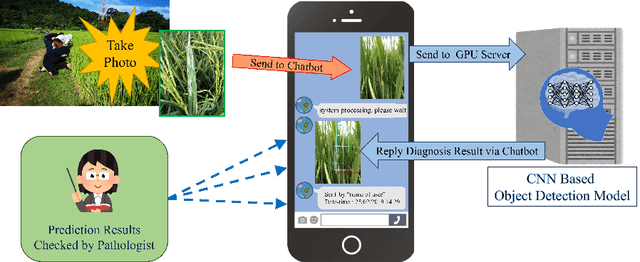
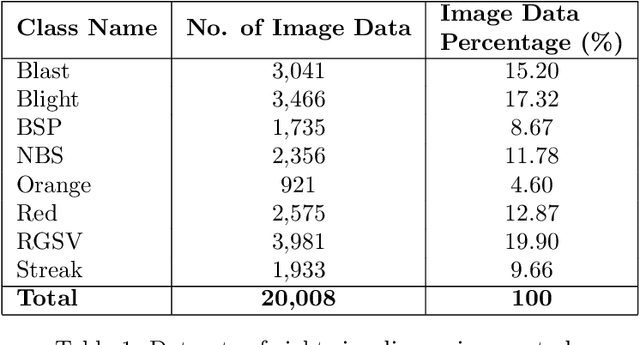
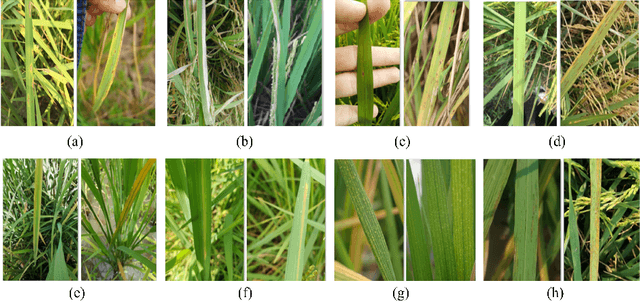
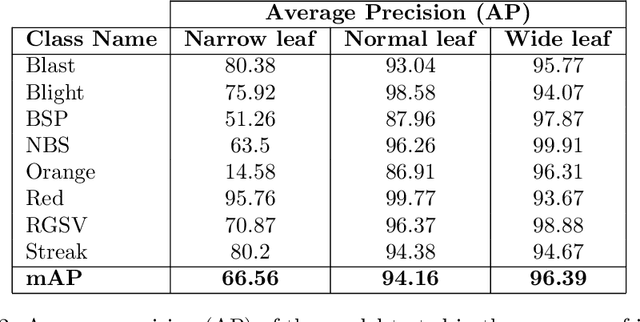
Abstract:Fast, accurate and affordable rice disease detection method is required to assist rice farmers tackling equipment and expertise shortages problems. In this paper, we focused on the solution using computer vision technique to detect rice diseases from rice field photograph images. Dealing with images took in real-usage situation by general farmers is quite challenging due to various environmental factors, and rice leaf object size variation is one major factor caused performance gradation. To solve this problem, we presented a technique combining a CNN object detection with image tiling technique, based on automatically estimated width size of rice leaves in the images as a size reference for dividing the original input image. A model to estimate leaf width was created by small size CNN such as 18 layer ResNet architecture model. A new divided tiled sub-image set with uniformly sized object was generated and used as input for training a rice disease prediction model. Our technique was evaluated on 4,960 images of eight different types of rice leaf diseases, including blast, blight, brown spot, narrow brown spot, orange, red stripe, rice grassy stunt virus, and streak disease. The mean absolute percentage error (MAPE) for leaf width prediction task evaluated on all eight classes was 11.18% in the experiment, indicating that the leaf width prediction model performed well. The mean average precision (mAP) of the prediction performance on YOLOv4 architecture was enhanced from 87.56% to 91.14% when trained and tested with the tiled dataset. According to our study, the proposed image tiling technique improved rice disease detection efficiency.
A System for Automatic Rice Disease Detectionfrom Rice Paddy Images Serviced via a Chatbot
Nov 21, 2020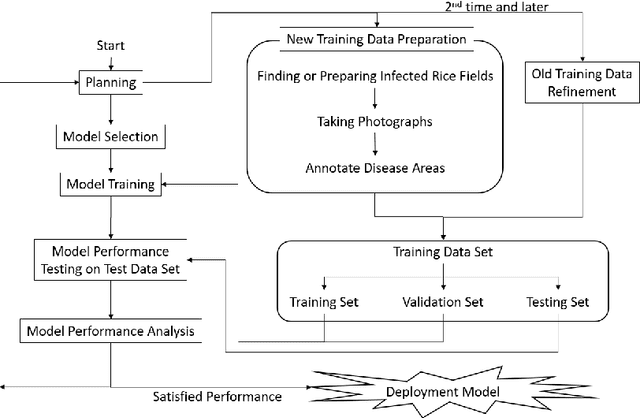
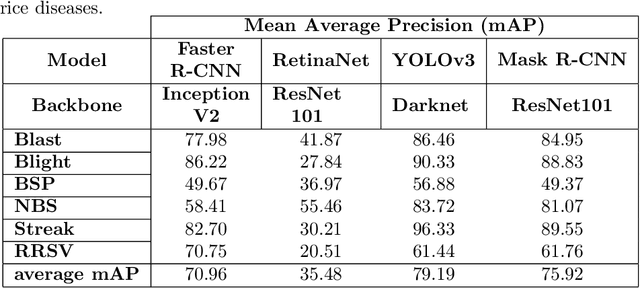
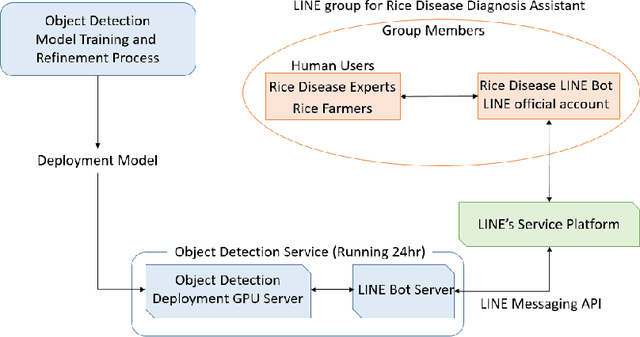
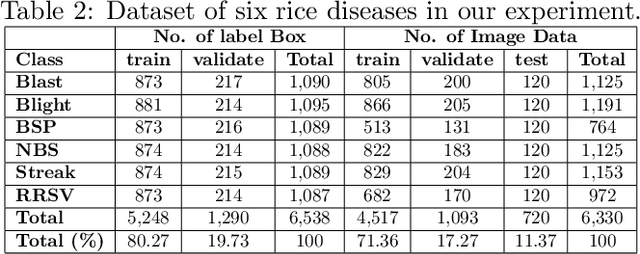
Abstract:A rice disease diagnosis LINE Bot System from paddy field images was presented in this paper. An easy-to-use automatic rice disease diagnosis system was necessary to help rice farmers improve yield and quality. We targeted on the images took from the paddy environment without special sample preparation. We used a deep learning neural networks technique to detect rice disease in the images. We purposed object detection model training and refinement process to improve the performance of our previous rice leaf diseases detection research. The process was based on analyzing the model's predictive results and could be repeatedly used to improve the quality of the database in the next training of the model. The deployment model for our LINE Bot system was created from the selected best performance technique in our previous paper, YOLOv3, trained by refined training data set. The performance of deployment model was measured on 5 target classes by average mAP improved from 82.74% in previous paper to 89.10%. We purposed Rice Disease LINE Bot system used this deployment model. Our system worked automatically real-time to suggest primary rice disease diagnosis results to the users in the LINE group. Our group included of rice farmers and rice disease experts, and they could communicate freely via chat. In the real LINE Bot deployment, the model's performance measured by our own defined measurement Average True Positive Point was 78.86%. It took approximately 2-3 seconds for detection process in our system servers.
 Add to Chrome
Add to Chrome Add to Firefox
Add to Firefox Add to Edge
Add to Edge